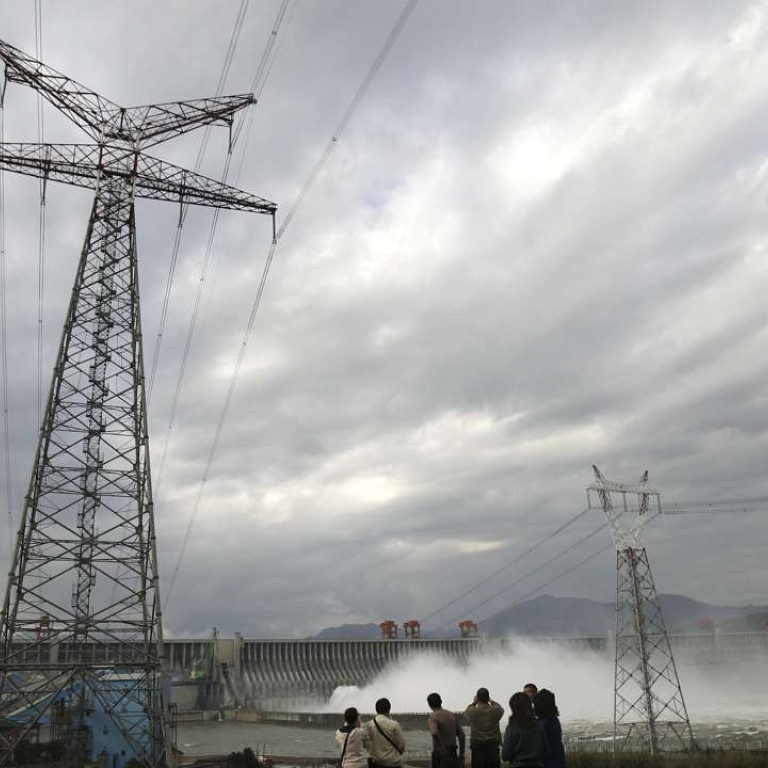
China Energy Engineering makes foray into power distribution
China Energy Engineering, one of the nation’s biggest power plant designers and builders, is expanding into the newly opened up business of power distribution previously operated by state monopolies, according to its chief.
The Beijing-based firm, the flagship unit of state-owned Energy China Group which listed in Hong Kong a year ago, wants to take advantage of new growth opportunities from the gradual liberalisation of the nation’s power industry. Power distribution monopolies held by the State Grid Corporation and China Southern Power Grid ended in 2015, opening up last mile distribution to competition.
“We have an industry chain covering a complete life-cycle suite of services spanning planning, consulting, design, construction, equipment, commissioning, operation, maintenance and overhaul,” chairman Wang Jianping told the South China Morning Post. “We have over 20 planning and engineering subsidiaries serving both power plant developers and grid operators.”
“The rapid growth of China’s electricity industry in the past decade has improved China’s construction technologies and qualities, giving us a competitive edge worldwide.”
Still, the company faces keen competition in a nascent but crowded market.
Besides the incumbent last mile distribution units of the former monopolies, over 300 power distribution firms have been set up in mainland China since deregulation started, of which around a fifth were power producers, according to a report last April by the Economic Information Daily, an affiliate of Xinhua.
In Guangdong alone, some 37 retail firms have been set up, of which almost 70 per cent are private enterprises, the report said.
But Wang was not fazed by the competition.
“Besides engineering knowledge, we also have expertise in market analysis, so we are more competitive than rivals which only have the cash to enter into this business,” he said, adding its design subsidiary in Guangdong has already completed a few power sales contracts.
He declined to divulge further expansion plans, saying they were still under evaluation.
Although China Energy will in effect be competing with the grid operators which are also its major customers, as part of the industry reform, Beijing has helped new entrants establish a foothold by giving them priority in serving brand new customers such as industrial parks.
“The No 9 industry reform circular issued in 2015 has stated that precedence should be given to the newly set up distribution firms, which can either build the last mile infrastructure themselves or lease it from others to conduct their power retailing business,” Hu Xinmin, principal of The Lantau Group, said.
Besides expanding into the electricity distribution business, China Energy also aims to raise the contribution from overseas business from 14.2 per cent in the first half of 2016.
“We have over three decades of history operating overseas, we have gone abroad ever since China began its open-door economic policy was first implemented,” Wang said.
Most of its overseas projects are located in Southeast Asia, South Asia and Africa.
In recent years, it has also expanded more into Central Asia, as well as the Middle East, Eastern Europe and South America.
Besides offering design and construction services, China Energy has also invested in some power plants.
This has helped it secure projects, since its investment would align project developers’ and its own interest, and quality of construction and maintenance can be ensured, Wang said.
“After our listing, our financing channels have been broadened, which will help further our investments in power plants both domestically and abroad,” he added.
China Energy generally takes minority stakes in its projects, but has occasionally also taken controlling stakes, such as a 870 MW hydro project in Pakistan and a 1,200 MW coal-fired plant in Vietnam.
Its plant investment has so far exceeded 1,000 mega-watt of equity-calculated generating capacity.
The firm recorded a 36.2 per cent year-on-year rise in net profit to 2.21 billion yuan in the first half of 2016.
Between 2012 and 2014, the firm designed or built power plants with total generating capacity of 160 giga-watt (GW), roughly twice the average annual newly-constructed capacity in China in recent years.

